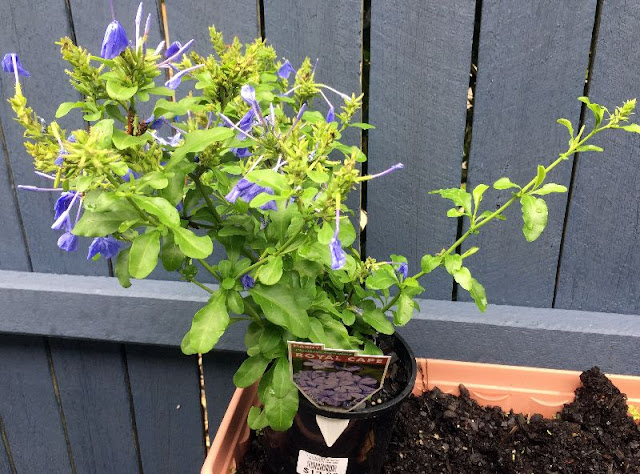A weeping ground cover with rich purple foliage. Purple Pixie boasts
showy pink ribbons of flowers in spring that compliment its foliage
nicely. This is a cold hardy, drought and humidity tolerant plant.
Size 30-50cm tall x 1.2 - 1.5m wide.
Full sun to part shade. Purple Pixie handles clay, loam or sandy soils.
Fertilise in early spring.
Prune after flowering in spring.
Pruning every 2-3 years will kepp Purple Pixie below 30cm
visit www.ozbreed.com.au for more information.
29-4-18
STILL WITH THE BLACK FLYING INSECTS
20-8-18. More insects, quite the little cloud, only around this plant. Taking a bit of 'advice' from a gardeners blog I just used a household flying insect spray to spray around, not directly onto, the plant.
Left it sit for 30-40mins then sprayed with water to wash off any insecticide residue....checked it at sundown and all looks good, no leaf damage and no insects. Holding my breath till tomorrow, hopefully no damage.
Found this link to a native alternative: http://www.australianplantsonline.com.au/breynia-cernua-ironstone-range.html
Breynia 'Ironstone Range'
Native shrub with deep burgundy-red foliage on cascading branches. Suited to accent planting screening and hedging when clipped. Use as a native alternative to Loropetalum "China Pink'.
20-10-18
Insects have moved on, plant is healthy and growing well. Branches are not starting to hang over edge of pot and little experiment (green leafy thingie - still have not found out what this plant is)...little experiment is forming roots and sending out new leaves, colour is a nice foil agains the dark red leaves of the Loropetalum.













